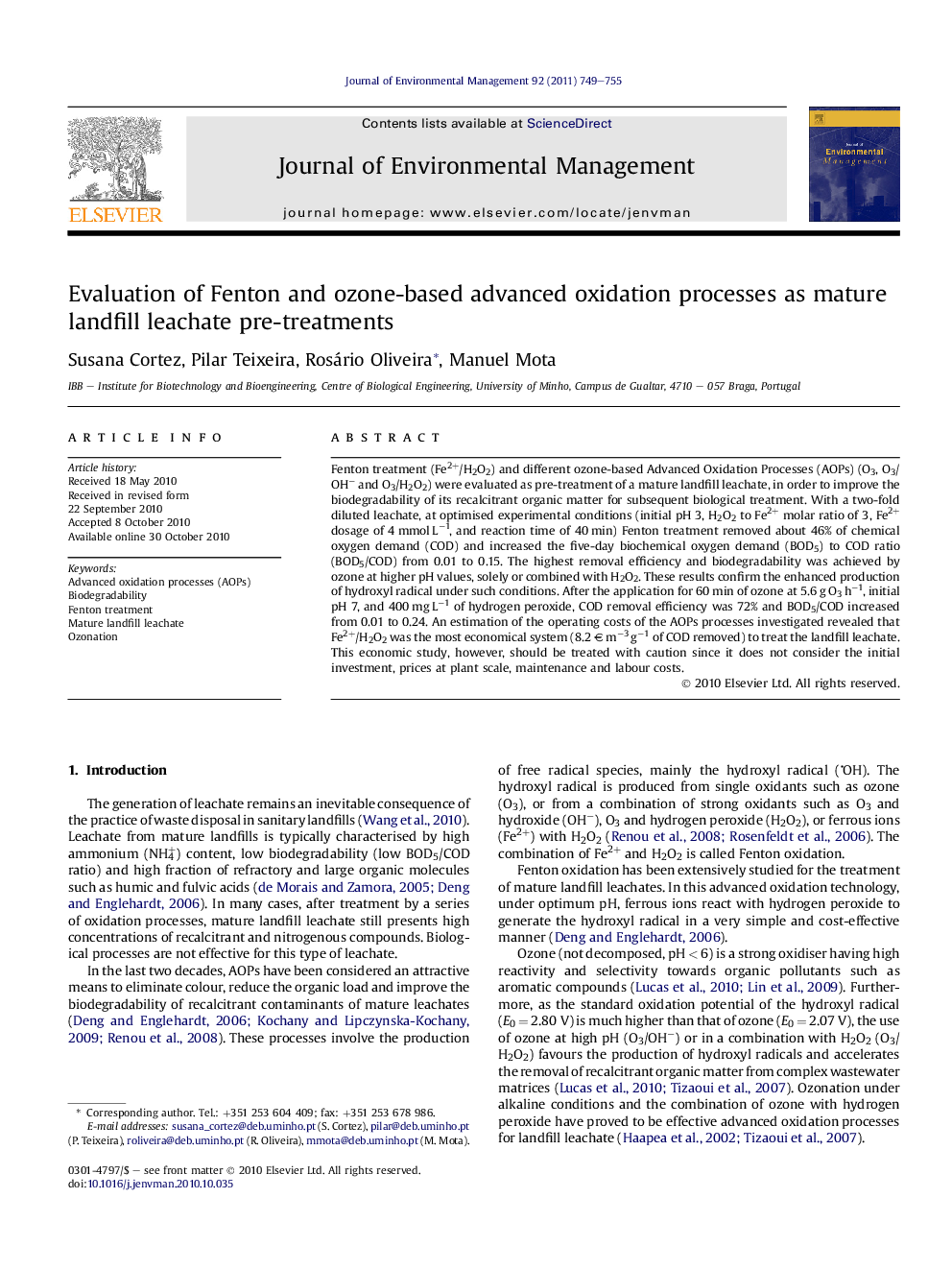| Article ID | Journal | Published Year | Pages | File Type |
|---|---|---|---|---|
| 10505537 | Journal of Environmental Management | 2011 | 7 Pages |
Abstract
Fenton treatment (Fe2+/H2O2) and different ozone-based Advanced Oxidation Processes (AOPs) (O3, O3/OHâ and O3/H2O2) were evaluated as pre-treatment of a mature landfill leachate, in order to improve the biodegradability of its recalcitrant organic matter for subsequent biological treatment. With a two-fold diluted leachate, at optimised experimental conditions (initial pH 3, H2O2 to Fe2+ molar ratio of 3, Fe2+ dosage of 4 mmol Lâ1, and reaction time of 40 min) Fenton treatment removed about 46% of chemical oxygen demand (COD) and increased the five-day biochemical oxygen demand (BOD5) to COD ratio (BOD5/COD) from 0.01 to 0.15. The highest removal efficiency and biodegradability was achieved by ozone at higher pH values, solely or combined with H2O2. These results confirm the enhanced production of hydroxyl radical under such conditions. After the application for 60 min of ozone at 5.6 g O3 hâ1, initial pH 7, and 400 mg Lâ1 of hydrogen peroxide, COD removal efficiency was 72% and BOD5/COD increased from 0.01 to 0.24. An estimation of the operating costs of the AOPs processes investigated revealed that Fe2+/H2O2 was the most economical system (8.2 â¬Â mâ3 gâ1 of COD removed) to treat the landfill leachate. This economic study, however, should be treated with caution since it does not consider the initial investment, prices at plant scale, maintenance and labour costs.
Keywords
Related Topics
Physical Sciences and Engineering
Energy
Renewable Energy, Sustainability and the Environment
Authors
Susana Cortez, Pilar Teixeira, Rosário Oliveira, Manuel Mota,
